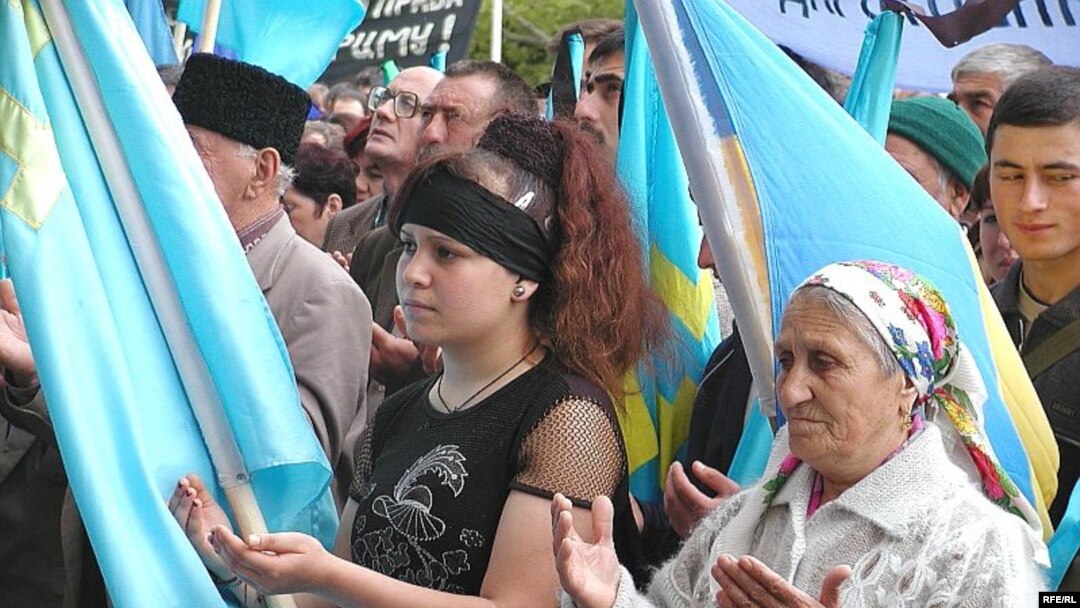His father, Jelal Efendi, was not so fortunate. Soviet authorities did not permit him to resettle in Crimea -- now part of Ukraine -- after he was deported to remote Uzbekistan.
The Efendis' story is all too common. In May 1944, Soviet authorities rounded up Crimea's 190,000 Tatars and loaded them onto freight trains bound for Central Asia, mainly for Uzbekistan.
This collective punishment was ordered by Soviet dictator Josef Stalin, who accused the entire Crimean Tatar population of collaborating with Nazi Germany in World War II.
The 1944 deportation remains a painful chapter in the history of Crimean Tatars. Almost half of the deportees are estimated to have died during the journey or shortly afterward.
On September 5, 1967, Soviet authorities issued a decree exonerating Crimean Tatars from alleged wrongdoing.
The decree allowed thousands of Tatars deported to seek repatriation to Crimea.
Continuing Discrimination
Forty years later, however, many Tatars remain outside their homeland or continue to face discrimination at home.
Refat Chubarov is the deputy head of the Mejlis, the legislative body created after the Soviet collapse to represent Crimean Tatars.
Soviet authorities, he says, never had any genuine intention of giving redress to Crimean Tatars.
"The growth of the Crimean Tatar movement in the 1960s, external aspects of Soviet foreign policy of that time, the impending 50th anniversary of the October revolution, but above all the pressure exerted by Crimean Tatars, forced Soviet authorities to pretend they were solving the Crimean Tatar problem," he says.
Following the 1967 decree, the government did nothing to facilitate The 1944 deportation remains a painful chapter for Tatars (RFE/RL)the resettlement of Crimean Tatars on the peninsula.
On the contrary, authorities adopted legislation tightening rules for returnees seeking to obtain a passport and housing in Crimea. Those who were able to find housing were rarely granted residence permits, which in turn prevented them from finding work. Like Jelal Efendi, who attempted to return home in the 1960s, large numbers of Crimean Tatars were eventually deported back to Central Asia.
Chubarov says the decree only strengthened their determination to return to their native country.
"They understood that the problem of their return depended on the mass character of the Crimean Tatar national movement and the unity of their movement," he says. "I think that was the main result of that decree for Crimean Tatars."
It wasn't until perestroika in the late 1980s that Crimea opened its door wide for Crimean Tatars.
But like Crimean political analyst Mykola Semena, many accuse Moscow of turning its back on Crimean Tatars after the Soviet collapse.
"International problems should be settled by countries who are connected with these problems," Semena says. "In this case, the Crimean Tatar issue should be settled by Russia. When it comes to rights and legal obligations, Russia proclaims itself the Soviet Union's heir. But when it comes to responsibilities, to helping other countries solve problems, Russia distances itself and declares this is an internal problem of such or such country."
No Celebrations
Today, Crimea is home to some 300,000 Tatars.
The Ukrainian government over the past decade has been allocating some $10 million annually to help Tatars resettle in Crimea. Half of them have been allocated plots of land.
But Crimean Tatars say they are still struggling to find their place in Ukrainian society.
Many of them say they continue to face discrimination and higher unemployment than Crimea's Slavic majority population.
This is why the September 5, 1967 decree has gone largely unnoticed, and uncelebrated, in Crimea.
RFE/RL Belarus, Ukraine, And Moldova Report
SUBSCRIBE For weekly news and analysis on Belarus, Ukraine, and Moldova by e-mail, subscribe to "RFE/RL Belarus, Ukraine, And Moldova Report."


